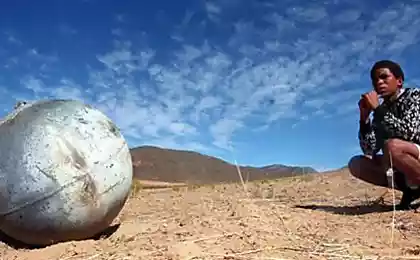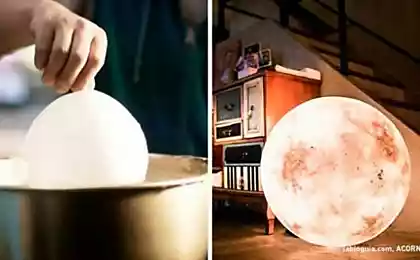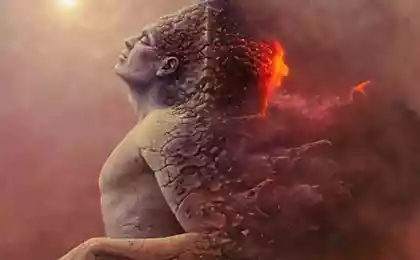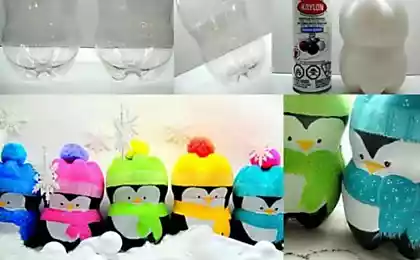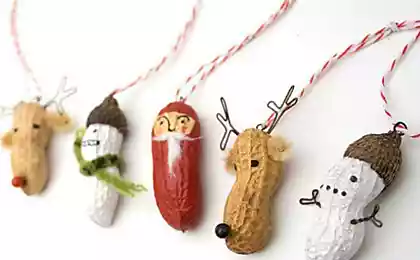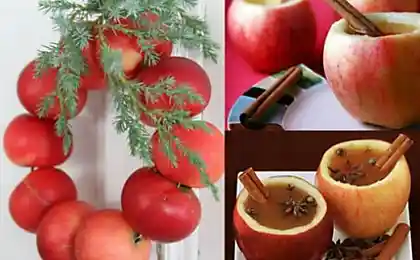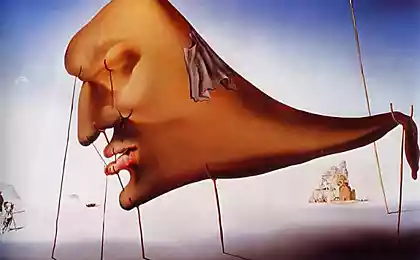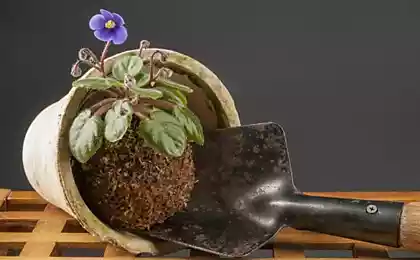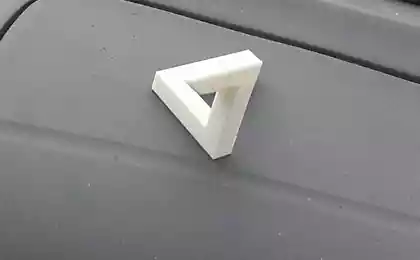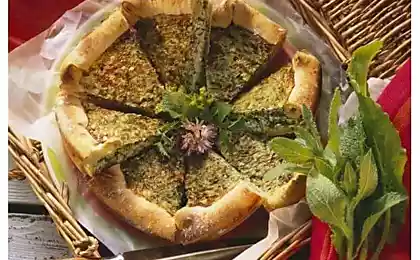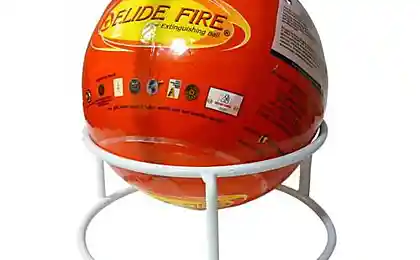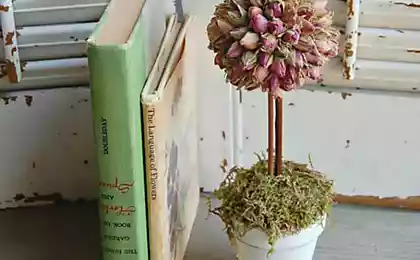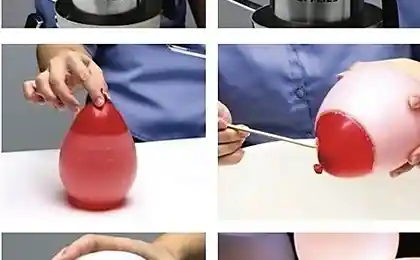745
Life Ball
In this hermetically sealed glass bulb inhabited by many living beings. Year after year. Thus the bulb does not require watering, feeding or air. Only light. This small, closed world is ready to talk to any of the delicate balance of nature. He - a miniature model of the planet. As a planet, it can kill.
5 ph
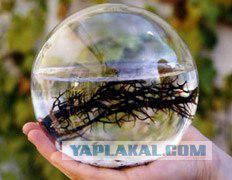
"Ecosphere» (EcoSphere) - the product is not new, but very nice. Besides, it is an interesting story.
"Ecosphere" came up about a quarter of a century ago, two scientists from the Jet Propulsion Laboratory (Jet Propulsion Laboratory), now deceased Joe Hanson (Joe Hanson) and Claire Folsom (Clair Folsome).
It was sort of a byproduct of research on closed ecosystems for long-term space flights, which were required to maintain a balance delicately all substances from the outside in because the ship could arrive just energy.
Of course, science fiction writers have long described the space greenhouses and farms. But the question is - how to make the cycle of transformation of substances in a confined space was really self-sufficient?
Naturally, it was necessary to the nearest milligram to calculate all the biochemical chain of all those involved in the cycle of the substance of living beings.
Thus it was found an interesting combination of stand-alone seaweed, shrimp and certain bacteria, which could indefinitely nourish each other "in a circle", while their tiny little world is illuminated by the rays of the sun.
"Ecosphere" is produced and sold as a souvenir of the American company Ecosphere Associates, once received the technology from NASA, more than 15 years. Ecosphere Associates also gave a license to produce these unusual balls European company Ecosphere Europe.
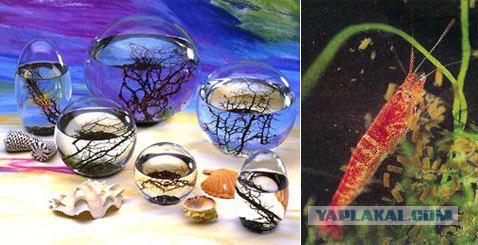
five spheres and "eggs" of glass can consist of a dozen centimeters to one meter in diameter. The largest sample intended for museums, exhibitions and other similar places. Prices for popular desktop models (with a diameter of 10 to 23 centimeters) range from about $ 80 to $ 500.
Inside the "Ecosphere" is a bit of gravel, a little dead coral branches (gorgonians), strictly measured amount of filtered sea water and air, seaweed, a few shrimp and a host of bacteria.
Algae grow in the light, absorbing carbon dioxide and releasing oxygen. Shrimp breathe oxygen, emit carbon dioxide, they eat algae and bacteria. Bacteria feed on waste of life prawns and again, release carbon dioxide, supplying the necessary substances algae. The circle closes.
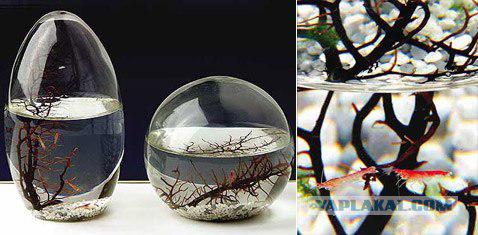
You might think that no care "Ecosphere" is not required, but the beauty of this instructive curio that without attention of the owner, he will die. In any case, the first to die shrimp. Algae hold out longer.
The fact is that to maintain a balance between the field of biochemical reactions that require a certain amount of light: 6-12 hours per day, with in any case no direct sunlight and reflected scattered. For illumination can be used fluorescent lamps.
If the light is not enough, the algae begin to die, reducing the amount of food for the shrimp. And the shrimp begin to die from hunger. If you overdo it with the duration of lighting, algae will start to multiply excessively, increase pH-value of water, and shrimp and die.
More it is imperative to monitor the temperature of the ball. It must remain within 15-25 ° C and should not fluctuate dramatically.
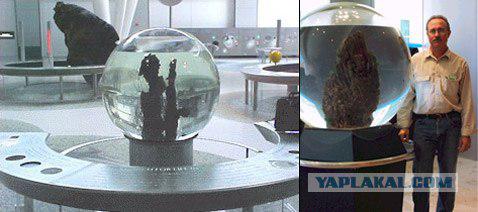
In general, Americans offer any sure how careful you need to relate to nature. After the ecosystem of the planet is also closed.
But how many can live "Ecosphere"? Small instance - 2-3 years. Larger models - longer. Lifespan shrimp than 5 years. Concrete results are dependent on compliance with the conditions of light and temperature. The company keeps samples older than 8 years old, which is still full of life. A separate instances, lost shrimp, but which still live algae exist in a sealed glass for over 18 years.
Here it should be noted that the ball only breed algae and bacteria. The number of shrimp remains constant at first, and later gradually reduced. However, in the long history of the company have been cases of breeding shrimp in the "ecosphere", but according to the creators of this product is extremely rare, exceptional.
From the curious features "Ecosphere" is worth noting a small magnet with a rough surface, which manufacturers are thrown into each ball. With the second magnet (attached to the purchase) or any magnet on the refrigerator inner magnet can be driven on the glass, cleaning the inside of his fine flying generated indwelling wildlife.
Thus, you can improve not only your own review tiny little world, but also a view of the surrounding area for its main inhabitants - shrimp. Those, even though small, have eyes, nervous system and, therefore, may look at you the same way you look at them. What they do think?
Maybe some shrimp philosopher, who lives in one of the "Ecosphere" is just now composing a treatise on the possibility of life outside his native universe bounded by a rounded glass?
There is something to think about. No wonder the company recalls: "Do not shake the" ecosphere "and do not drop it. Remember - this is someone's home! »
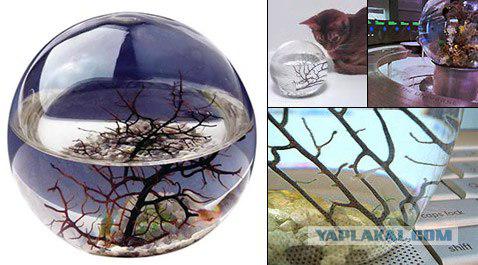
Source:
5 ph

"Ecosphere» (EcoSphere) - the product is not new, but very nice. Besides, it is an interesting story.
"Ecosphere" came up about a quarter of a century ago, two scientists from the Jet Propulsion Laboratory (Jet Propulsion Laboratory), now deceased Joe Hanson (Joe Hanson) and Claire Folsom (Clair Folsome).
It was sort of a byproduct of research on closed ecosystems for long-term space flights, which were required to maintain a balance delicately all substances from the outside in because the ship could arrive just energy.
Of course, science fiction writers have long described the space greenhouses and farms. But the question is - how to make the cycle of transformation of substances in a confined space was really self-sufficient?
Naturally, it was necessary to the nearest milligram to calculate all the biochemical chain of all those involved in the cycle of the substance of living beings.
Thus it was found an interesting combination of stand-alone seaweed, shrimp and certain bacteria, which could indefinitely nourish each other "in a circle", while their tiny little world is illuminated by the rays of the sun.
"Ecosphere" is produced and sold as a souvenir of the American company Ecosphere Associates, once received the technology from NASA, more than 15 years. Ecosphere Associates also gave a license to produce these unusual balls European company Ecosphere Europe.

five spheres and "eggs" of glass can consist of a dozen centimeters to one meter in diameter. The largest sample intended for museums, exhibitions and other similar places. Prices for popular desktop models (with a diameter of 10 to 23 centimeters) range from about $ 80 to $ 500.
Inside the "Ecosphere" is a bit of gravel, a little dead coral branches (gorgonians), strictly measured amount of filtered sea water and air, seaweed, a few shrimp and a host of bacteria.
Algae grow in the light, absorbing carbon dioxide and releasing oxygen. Shrimp breathe oxygen, emit carbon dioxide, they eat algae and bacteria. Bacteria feed on waste of life prawns and again, release carbon dioxide, supplying the necessary substances algae. The circle closes.

You might think that no care "Ecosphere" is not required, but the beauty of this instructive curio that without attention of the owner, he will die. In any case, the first to die shrimp. Algae hold out longer.
The fact is that to maintain a balance between the field of biochemical reactions that require a certain amount of light: 6-12 hours per day, with in any case no direct sunlight and reflected scattered. For illumination can be used fluorescent lamps.
If the light is not enough, the algae begin to die, reducing the amount of food for the shrimp. And the shrimp begin to die from hunger. If you overdo it with the duration of lighting, algae will start to multiply excessively, increase pH-value of water, and shrimp and die.
More it is imperative to monitor the temperature of the ball. It must remain within 15-25 ° C and should not fluctuate dramatically.

In general, Americans offer any sure how careful you need to relate to nature. After the ecosystem of the planet is also closed.
But how many can live "Ecosphere"? Small instance - 2-3 years. Larger models - longer. Lifespan shrimp than 5 years. Concrete results are dependent on compliance with the conditions of light and temperature. The company keeps samples older than 8 years old, which is still full of life. A separate instances, lost shrimp, but which still live algae exist in a sealed glass for over 18 years.
Here it should be noted that the ball only breed algae and bacteria. The number of shrimp remains constant at first, and later gradually reduced. However, in the long history of the company have been cases of breeding shrimp in the "ecosphere", but according to the creators of this product is extremely rare, exceptional.
From the curious features "Ecosphere" is worth noting a small magnet with a rough surface, which manufacturers are thrown into each ball. With the second magnet (attached to the purchase) or any magnet on the refrigerator inner magnet can be driven on the glass, cleaning the inside of his fine flying generated indwelling wildlife.
Thus, you can improve not only your own review tiny little world, but also a view of the surrounding area for its main inhabitants - shrimp. Those, even though small, have eyes, nervous system and, therefore, may look at you the same way you look at them. What they do think?
Maybe some shrimp philosopher, who lives in one of the "Ecosphere" is just now composing a treatise on the possibility of life outside his native universe bounded by a rounded glass?
There is something to think about. No wonder the company recalls: "Do not shake the" ecosphere "and do not drop it. Remember - this is someone's home! »

Source:
